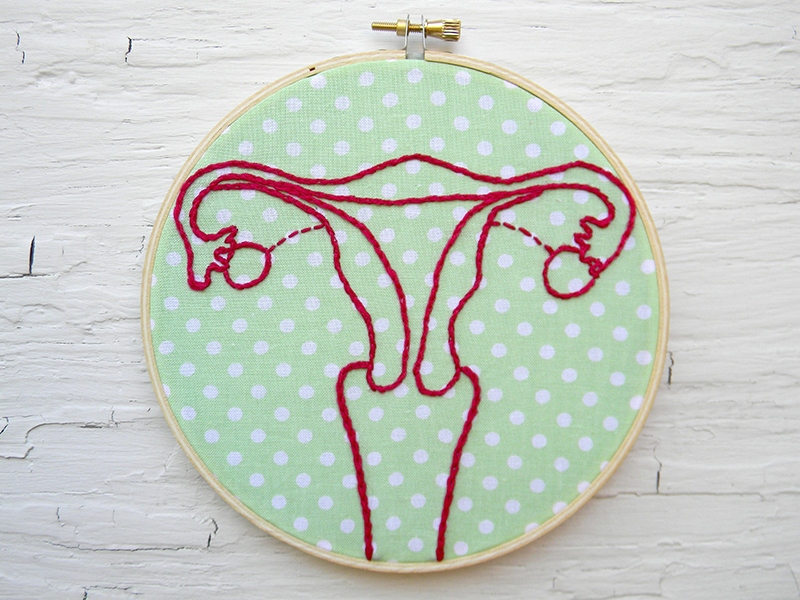Asherman’s syndrome

Asherman’s syndrome or uterine synechia
The problem of infertility is very relevant in our time. And despite the fact that medicine is developing quite rapidly, statistics show only an increase of infertile couples in the world. On the female side, infertility is divided into 2 large categories: the absence of fertilization, and the inability to carry a child. Moreover, the problem of miscarriage is more serious. Because for artificial insemination there are a lot of therapeutic methods, such as in vitro fertilization (IVF) and intrauterine insemination (IUI), and the inability to carry a child is much more difficult to cope with and is often incurable in advanced, severe cases.
One of the reasons for miscarriage is Asherman’s Syndrome, or as it is also called intrauterine synechiae. The most common cause of the development of the syndrome is traumatic damage to the endometrium of the uterus, resulting from frequent diagnostic procedures in the middle of the uterus, artificial termination of pregnancy and surgical interventions on the uterus.
Asherman’s syndrome or intrauterine synechiae – a pathological condition during which adhesions and scars are formed in the uterus, resulting from injuries, surgical interventions, and frequent infectious diseases. Synechiae, which are formed as a result of external factors, are constrictions, threads, membrane, in the form of a cobweb or solid.
The reasons for the development of Asherman’s Syndrome
The uterine cavity, from the inside, is covered with an endometrium, which consists of 2 layers:
- the functional layer – exfoliates and comes out every month during menstruation
- the basal layer – restores functional every time after menstruation
It is damage to the basal layer that leads to the formation of synechia and a decrease in the lumen of the uterus.
This often occurs after abortion, instrumental or manual removal of the placenta during childbirth, curettage after miscarriage and other surgical interventions on the uterine cavity, in which intrauterine scars and later adhesions may form. Also, a provoking factor for the appearance of intrauterine synechiae are: intrauterine devices, which can start an inflammatory process, genital tuberculosis – can cause chronic endometritis, which quite often causes the development of severe forms of Asherman’s syndrome and obliteration of the entire uterine cavity, and thus the uterus cannot accept and carry an egg.
Symptoms of intrauterine synechia
The main symptoms that women complain to doctors are:
- Changes in the menstrual cycle. Reducing the amount of blood and the duration of menstruation, up to amenorrhea
- Infertility – the sperm cannot reach the egg or the embryo cannot attach to the wall of the uterus
- Frequent recurrent miscarriages that occur without external factors
Sometimes, a woman does not notice any symptoms, and can only find out about them when examined by a doctor. It all depends on the severity and form of the process. Therefore, it is so important to carry out preventive examinations, and especially before getting pregnant.
Degrees and forms of Asherman’s Syndrome
Intrauterine synechiae are classified according to their structure and distribution in the uterus.
Behind the structure of the synechia there are:
- Mild form – there are membranous fibrin synechiae, which are easily dissected
- Moderate form – dense, fibrinous-muscle fibers, attempts to dissect begin to bleed
- The severe form is connective tissue, which, in the form of a bridge, passes in the uterine cavity from wall to wall. And they cannot be dissected on an outpatient basis; a full-fledged operation is necessary
Degrees:
- The first degree – synechiae occupy 25% of the uterine cavity and do not go beyond it
- The second degree – synechiae spread to 75%, and the mouths of the pipes are also involved in the process
- The third degree – the entire uterine cavity is filled with adhesions
Diagnosis of Asherman’s syndrome
First of all, after the identified complaints, the doctor collects anamnesis about previous pregnancies, curettage of the uterus, abortions, infectious and inflammatory diseases of the genitals were performed.
For instrumental diagnostics, doctors use ultrasound and hysteroscopy. On ultrasound, the doctor may suspect that there is synechia in the uterus. But for confirmation, hysteroscopy is needed, which is the gold standard in the diagnosis of intrauterine synechiae. It allows you to visualize the internal cavity of the uterus and thus see the whole picture from the inside and assess the spread of the process. Also, a biopsy of synechia is often done for histological examination.
Treatment of Asherman’s syndrome
Treatment is prescribed depending on the spread of synechiae in the middle of the uterus and their structure. The main method of treatment is surgical, the purpose of which is the removal of intrauterine adhesions, the actual dissection of synechia.
Depending on the stage of the disease, this can be done in two ways:
- Mild to moderate form of the syndrome, it is not difficult to treat. With the help of operative hysteroscopy, synechiae are dissected using scissors or mini-electrodes. The main goal is, minimally traumatic removal of intrauterine adhesions, the return of full menstrual function and fertility
- The severe form of the pathological process requires, together with hysteroscopy, the use of additional measures, such as laparoscopy, to protect the uterus from perforation. It should also be remembered that a significant area of obliteration of the uterine cavity and / or fallopian tubes, deep trauma to the endometrium and myometrium require several surgical interventions to reduce the load on the body
In the postoperative period, the woman also undergoes a course of hormonal treatment, which will strengthen the treatment.
This Asherman syndrome has a high risk of relapse. Therefore, after a while, the woman undergoes preventive hysteroscopy, in order to monitor the effectiveness of treatment and early diagnosis of relapse and spread of the disease.
What to do when the symptom is incurable?
Sometimes, in difficult cases, even after complex surgical intervention and hormonal treatment, there is no positive result and pregnancy does not occur. In this case, doctors recommend using the surrogacy program.
Surrogacy – Surrogacy is a reproductive technology to help infertile women who cannot bear a child. It consists in the fact that biological material (sperm and eggs) is taken from a married couple, an embryo is created, which is transferred into the uterine cavity to another woman who agrees to carry and give birth to a child.
Thus, this procedure has such positive aspects:
- The married couple will have children
- Children will be like their parents
- A child will be carried and given birth by a completely healthy woman, in turn, reduces the risks
- The couple is confident in the child’s genetic health and knows who she or he will look like
There is no need to be upset and give up if the doctor told you about the impossibility of carrying the child. There are always options. You need to try different methods and happy children will run around in your house.


